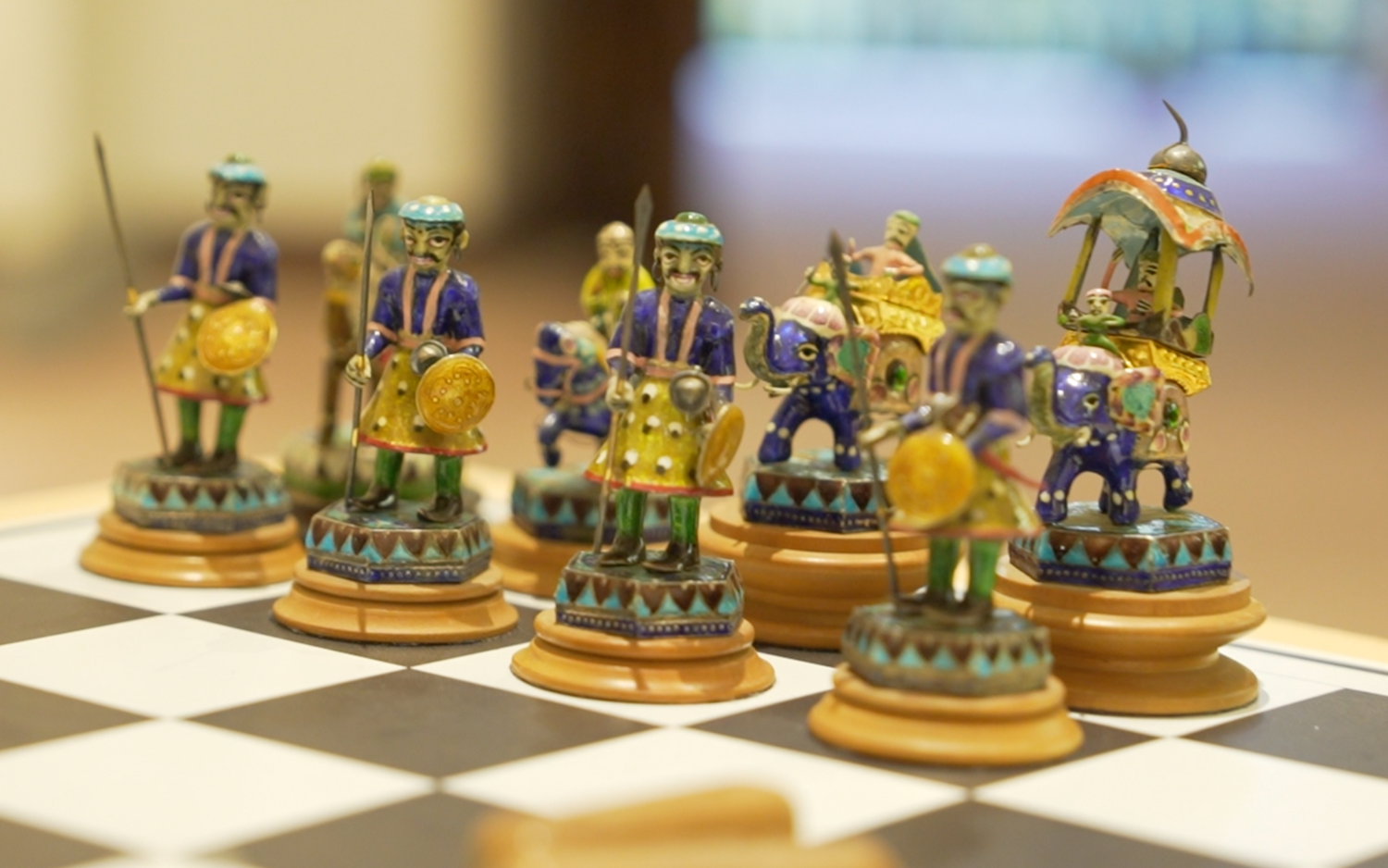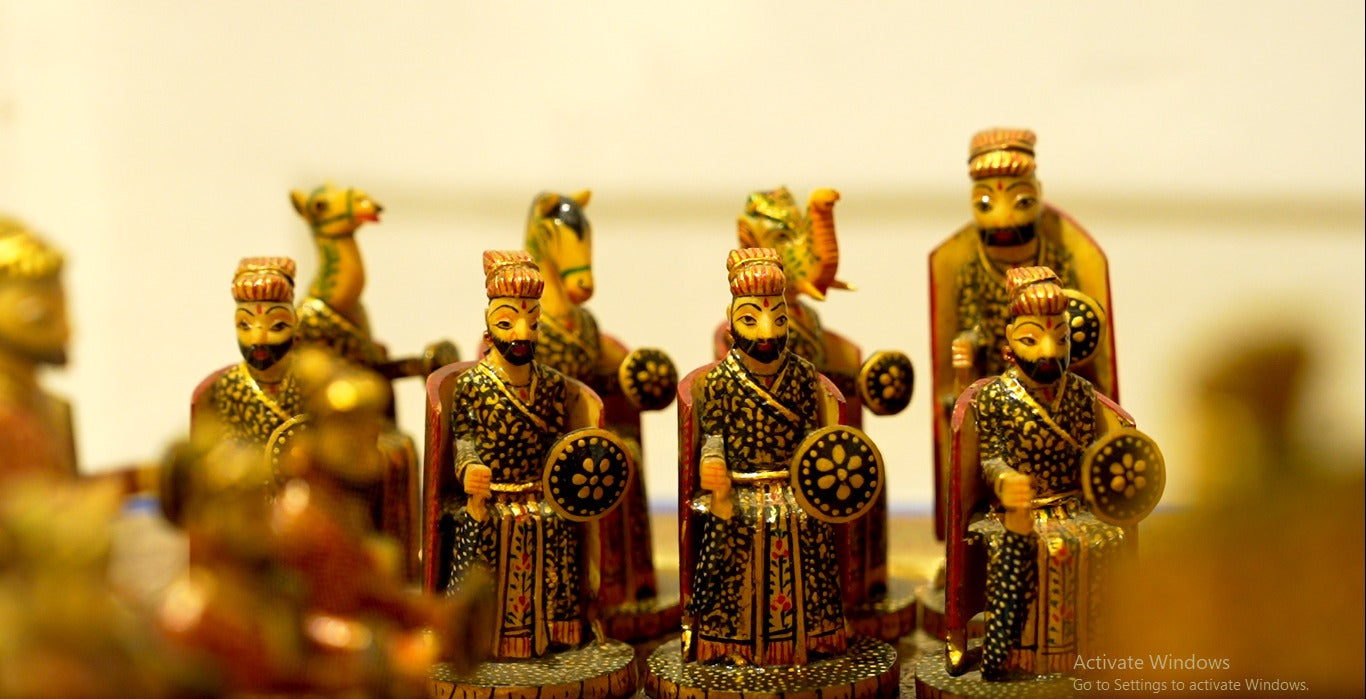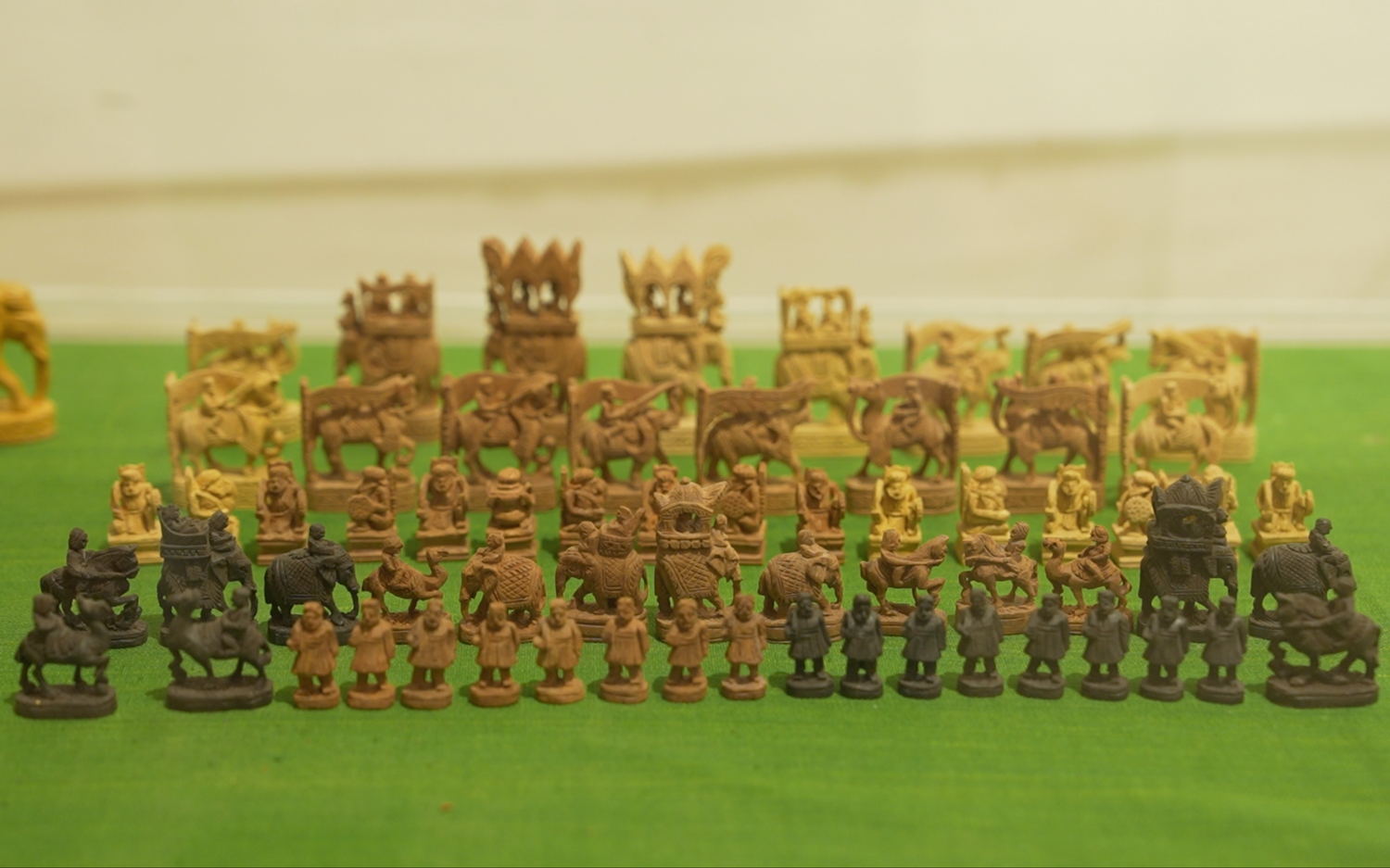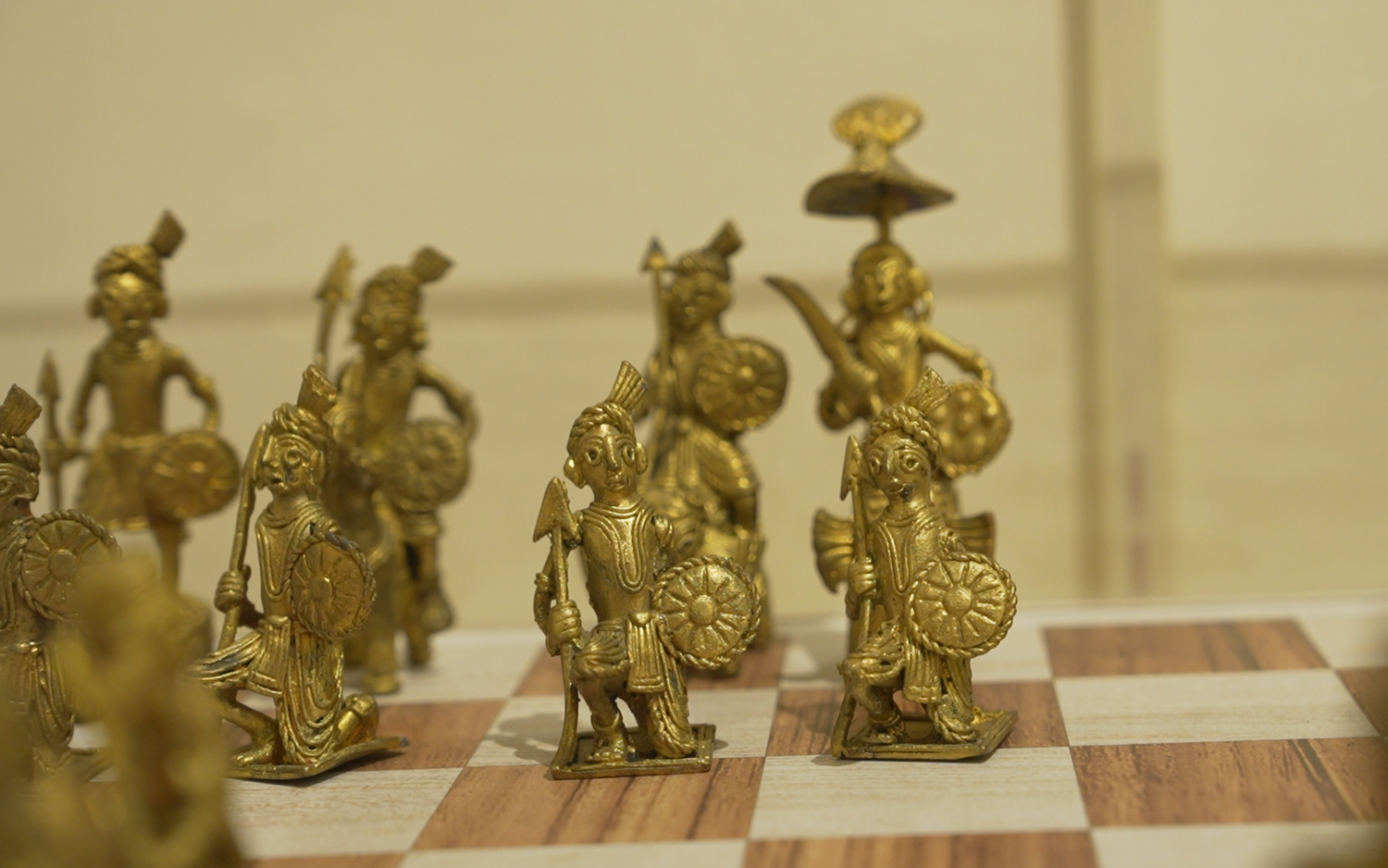Chaturanga & Shatranj Collection
concept note
From Rajasthan’s camel bone, sandalwood, stone, and silver, master craftsmen once created exquisite Shatranj sets — often in collaboration with jewellers and miniature painters.
When Sheherwali traders from Rajasthan settled in Murshidabad under the Nawabs of Bengal, the region blossomed into a hub of art and patronage. Here, ivory carvers and sandalwood artisans refined the tradition of miniature Shatranj sets — crafted in a single piece, often under 2 inches.
Khol Khel has revived this rare practice with 15 years of sustained patronage, carrying forward one of the earliest examples of cultural and craft exchange that shaped the identity of a faraway land.

Udaipur
Miniature Painting on Camel Bone
Originating from Rajasthan’s long tradition of ivory and bone craft, this set is carved from ethically sourced camel bone and finished with meticulous hand-painting. Miniaturists decorate the figures with fine brushwork, often using natural pigments and gold highlights. Each piece is a fusion of sculpture and painting, echoing the splendour of Mughal miniatures.

Jaipur
Meenakari on Silver
Hand-formed silver pieces finished with fired glass enamel (meenakari) in the Jaipur tradition. Artisans apply enamel in fine cells and fire it so the colours fuse permanently to the metal. Floral and jaali motifs bring a quiet richness without overpowering the board. Despite the ornament, the set is made for real play—weighted enough to feel sure in the hand.

Bikaner
persian style painted
This set showcases the Persian-inspired artistry of Jaipur painters, where chessmen are treated as miniature canvases. Figures are shaped in simple wood forms, then painted with lush Persianate motifs—floral arabesques, architectural arches, and jewel-like colour palettes. The result is a set that bridges cultures: Indian craftsmanship enlivened by Persian visual traditions. The style travelled along trade routes and royal courts and was adopted by painters of Bikaner.

Jaipur
Jali wood carving
Hand-carved from fragrant sandalwood, this set brings together the tactile warmth of wood with the precision of miniature sculpture. Each figure is intricately detailed, often with lattice work or miniature iconography echoing temple architecture. The smooth touch and lingering aroma of sandalwood transform every move into a sensory experience. These sets were historically treasured as heirlooms, given as wedding gifts or tokens of devotion, symbolising auspiciousness and refinement.

Jodhpur
Gold painted
This set comes from the painted woodcraft tradition of Jodhpur, Rajasthan. The style is closely tied to the toy-making and kavadh traditions of Jodhpur, in which artisans painted shrines, storytelling panels, and ceremonial figures. Here, that vocabulary is translated into a functional yet ornate play set, merging narrative, ornament, and strategy.

Murshidabad
Miniature wood carving
Murshidabad, once a flourishing center of ivory carving, now carries forward its legacy through finely worked wooden chess sets. Each piece in this miniature set is carved with astonishing detail—turbans, robes, and animal mounts all brought to life in the round. The figures recall the artistry of Bengal’s miniature craft traditions, where scale never diminished refinement. This set embodies resilience: a living continuation of Murshidabad’s artistry, adapted from ivory to sustainable woods.

Dariyapur
Dokra lost wax technique
Cast using the ancient lost-wax technique, the Dokra Chaturanga set celebrates one of India’s oldest metal casting traditions. Every piece is hand-moulded in bell metal, with its distinctive rustic finish, textured surface, and golden-brown sheen. The slightly abstract figures carry the spirit of tribal aesthetics—each pawn, knight, and king infused with folk imagination. Playing with this set is like entering a dialogue with the deep past, where ritual, play, and craft were inseparable.
